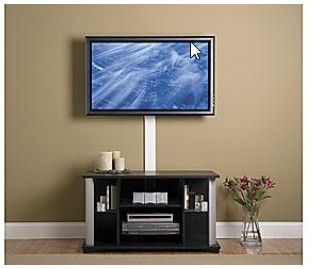- Subscribe to RSS Feed
- Mark Topic as New
- Mark Topic as Read
- Float this Topic for Current User
- Bookmark
- Subscribe
- Printer Friendly Page
- Mark as New
- Bookmark
- Subscribe
- Subscribe to RSS Feed
- Permalink
- Report Inappropriate Content
Optimal Height for 3D TV
- Mark as New
- Bookmark
- Subscribe
- Subscribe to RSS Feed
- Permalink
- Report Inappropriate Content
Re: Optimal Height for 3D TV
@Sam - Congrats on your new 3D. Your familiy is going to love it! I had the same issue when I brought mine home. It's really something to consider so it's good that you asked. Take a look at this distance calculator, it helped me. Acme should have one of these installed. http://hdinstallers.com/calculator.htm
- Mark as New
- Bookmark
- Subscribe
- Subscribe to RSS Feed
- Permalink
- Report Inappropriate Content
Re: Optimal Height for 3D TV
- Mark as New
- Bookmark
- Subscribe
- Subscribe to RSS Feed
- Permalink
- Report Inappropriate Content
Re: Optimal Height for 3D TV
Sam,
These are the main issues you need to consider when you are placing your new 3D TV.
3D TV Viewing Issues
Three main issues that consumers encounter when watching 3D are: reduction in brightness, "ghosting" (also referred to as crosstalk), and motion blur.
1. Brightness: The reduction in brightness is the result of having to view 3D images through either Active Shutter or Passive Polarized 3D Glasses. This can reduce the brightness of the incoming images up to 50%.
2. Ghosting/Crosstalk: This occurs when the left and right eye images are not synched exactly with the LCD shutters or polarized filters in 3D glasses. What happens is that an object(s) in an image appears to have a duplicate image that looks like a halo or ghost around the actual object.
3. Motion Blur: Another problem is that when objects move fast across the screen, the objects may seem blurry or stutter more than they might do on 2D source material. However, despite these issues, there is practical action you can take that may minimize these issues without calling in a tech guru.
- Mark as New
- Bookmark
- Subscribe
- Subscribe to RSS Feed
- Permalink
- Report Inappropriate Content
Re: Optimal Height for 3D TV
Sam,
Here's some info I found helpful.
Where to mount your TV
Ideally, the middle of your TV screen needs to be at about eye level while you're seated.
You'll want to be comfortable while watching TV, and mounting it too high can result in neck strain. Plus, you'll probably see the best-looking picture when you view your TV head-on, rather than at an angle. If you opt for a higher placement, consider using a tilting wall mount to angle the TV down.
Screen glare
To test: Sit in your favorite TV-watching spot and look at the place on the wall where you plan to mount your TV. Is there light reflecting off that area? If so, is it something fixable (by closing the curtains, or by moving a lamp)? Screen glare can be distracting, and detract from an otherwise beautiful picture, so be aware of potential sources of glare. A tilting or swiveling mount can also help you cut down on glare, by allowing you to angle the TV's screen away from the light source.
Using a TV stand may help.



